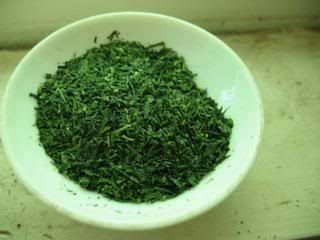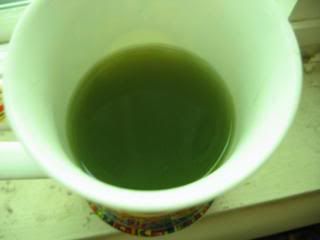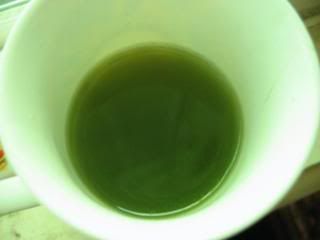
For a long time now I've been experimenting with all different kinds of green teas. From Japanese to Chinese, from Gunpowder to Gyokuro. I have probably tried around 40 different greens. Out of all these different teas, I have found the Fukamushi Sencha from Rishi Teas to be my favorite. Fukamushi can simply be considered a Sencha that has been steamed for twice to three times as long. Fukamushi differs from the average Sencha by producing a more emerald green cup, as well as a more opaque liquid due to high particulate matter. The higher particle count, which causes the virescent cloudiness, is probably a result of the deep steaming process, which is harder on the leaves. I have only tried two different Fukamushis, so my experience and knowledge of what makes a good Fukamushi is very limited. So far, I have come to understand that the more opaque the virescence, and the deeper the sweetness, the more I enjoy the Fukamushi. These two factors are what have connected me with the Fukamushi Sencha from Rishi.
As my knowledge of Fukamushi is very limited, this review will be kept very simple.
Upon inspection, the leaves are very broken up, due in part to this being from the end of the bag, and also due to the deep steaming process.


(Me trying to hold it still with shaky hands)


The dry leaves have a very nice smell, they smell very fresh, very "green." They are also quite minty, a nice "grassy mint."
I steeped 3.5 tsp of leaves in my Fukugata at 175° for about 45 seconds.



As you can see, the body of the tea is very opaque, a dark emerald green, which is my favorite in tea.
The aroma from the cup is quite sweet, very vegetal and a light-sweet-grassy smell. The sweetness in the aroma is not all that different from candy, save the sweetness is bolder.
The wet leaves do not appear that different from the dry:

The taste of the tea is very pleasing. At high temperatures, the taste is fairly grassy, yet still quite sweet. As the temperature goes down to more favorable conditions, the sweetness really comes out, but the sweetness comes right along with the vegetal taste. The sides of the toungue pick up the grassiness, which is also accompanied with the sweetness. At even lower temperatures, the tea is simply a very deep, vegetal-sweet. After the tea is all drunk, a light sweetness rests on the toungue. This tea is definately my favorite.
The second steeping is done in the Fukugata at 175° for 30 seconds. Less time is needed because the leaves have now been rejuvenated after their long dry period. The second steeping is even better, letting out a much darker color:



Would you look at how dark that is? It's like magic, this is very definately my favorite tea.
The taste of the second steeping is very similar, but lacking some of the grassy notes, and having an even deeper vegetal-sweetness, even sweeter!
The third and fourth steeping were very similar in all respects, but logically they carried a lighter flavor, yet magically, the color of the tea seemed only to get darker.
This tea has helped me discover my love for fukamushi, with respect to that, this blog will see much more Fukamushi in the future.

Rishi Teas has really been an awesome dealer. If I didn't have a half-pound of Fukamushi to drink from Hibiki-an, I'd be making another order this very minute.
0 comments:
Post a Comment